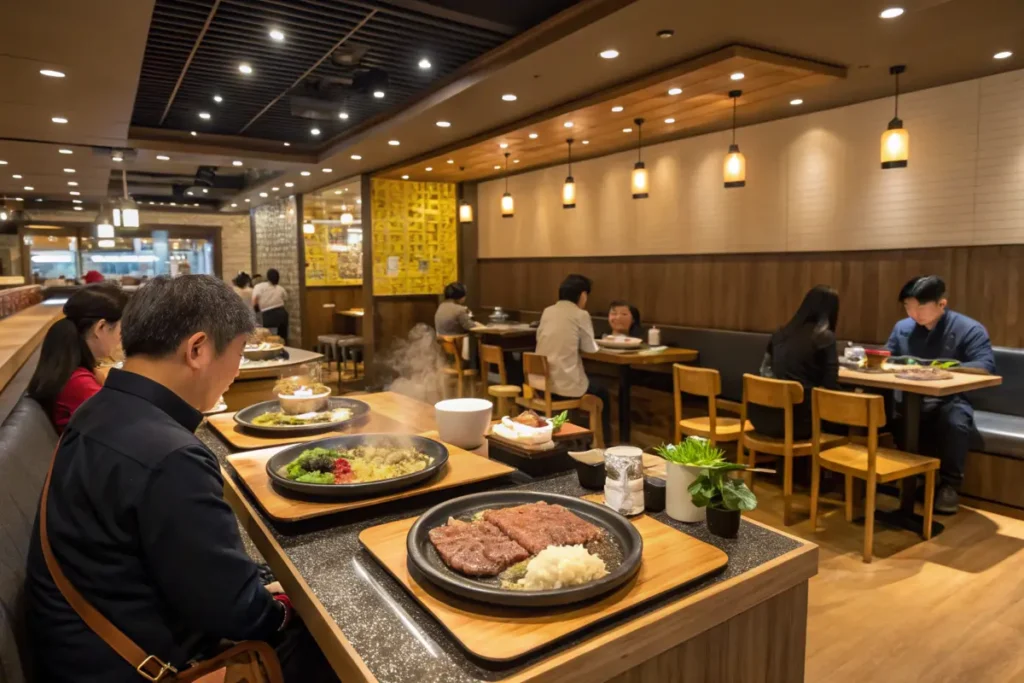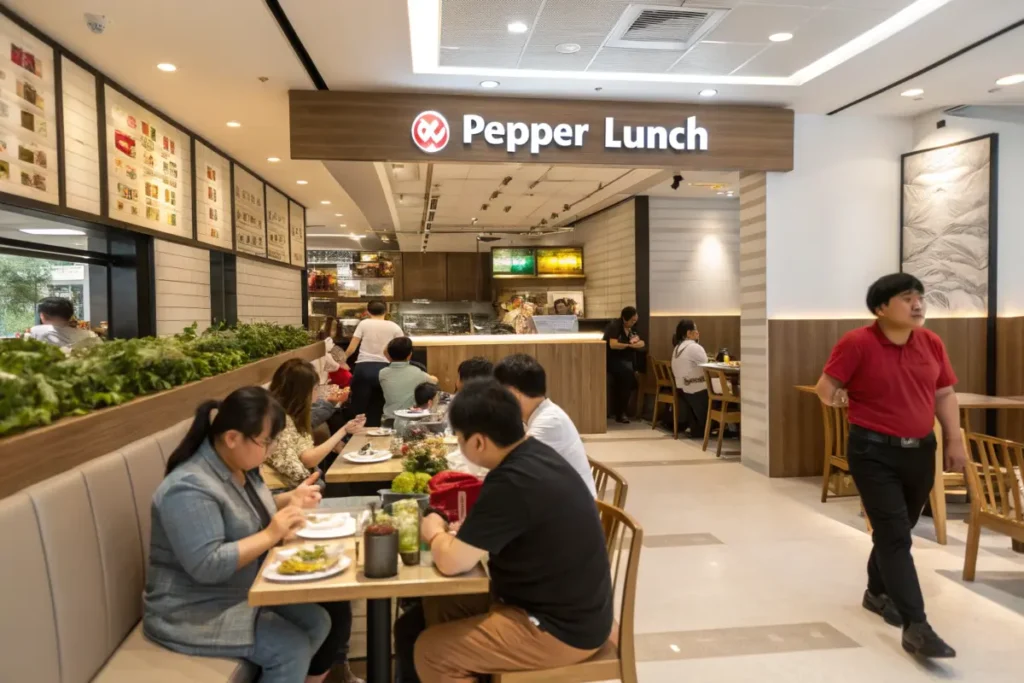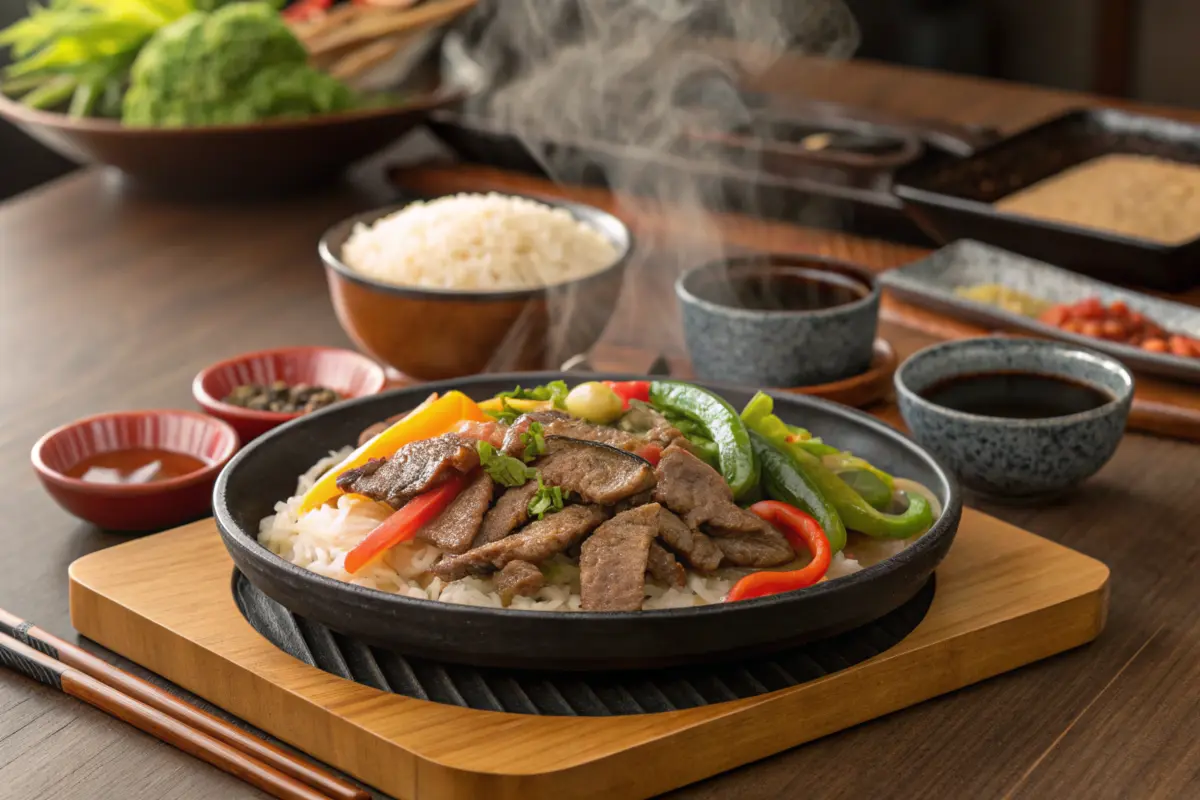Beef pepper rice is more than just a meal—it’s an experience. This sizzling dish, served on a hot iron plate, offers a mouthwatering blend of thinly sliced beef, flavorful rice, and aromatic seasonings. But where did this iconic dish come from? This article dives into its origins, exploring its humble beginnings, the innovative minds behind it, and how it became a global sensation. From its introduction in Japan to its international acclaim, you’ll discover the fascinating story of beef pepper rice. So, let’s dig in!
The Birth of Beef Pepper Rice
The Conceptualization of Beef Pepper Rice
The story of beef pepper rice begins with Kunio Ichinose, a visionary chef and entrepreneur. In 1970, Ichinose was running a successful restaurant, Kitchen Kuni, in Tokyo. However, managing multiple locations presented challenges, leading him to seek ways to streamline operations. One evening, inspiration struck at home when his wife prepared a simple yet unforgettable meal on a newly purchased iron plate. Thinly sliced beef, rice, soy sauce, and a dash of black pepper created a dish so delicious that Ichinose saw its potential for restaurant menus.
The simplicity of the dish was its genius—no need for complex recipes or expensive ingredients. Just quality beef, rice, and a handful of seasonings. This humble dinner became the foundation for what we now know as beef pepper rice.
Key Ingredients and Original Recipe
What makes beef pepper rice stand out? Its simplicity. The original recipe featured:
- Thinly sliced beef, cooked just enough to retain its juiciness.
- Fluffy steamed rice as the perfect base.
- A sprinkle of freshly ground black pepper for a punch of flavor.
- Soy sauce and butter to elevate the dish’s umami profile.
The dish was not only flavorful but also quick and easy to prepare, making it ideal for the fast-paced restaurant industry. Its signature iron plate ensured the food stayed hot, allowing diners to finish cooking their meal to their liking right at the table.
Introduction at Steak Kuni in Tokyo
Ichinose first introduced beef pepper rice at Steak Kuni, a Tokyo-based restaurant. The dish quickly gained popularity among customers who loved its sizzling presentation and customizable cooking experience. Patrons appreciated the novelty of a meal they could partially prepare themselves, creating an engaging and interactive dining experience.
This early success marked the beginning of beef pepper rice’s journey to culinary stardom. As the dish gained traction, Ichinose refined the recipe and began exploring ways to scale its success.
The Evolution of Pepper Lunch

Founding Pepper Lunch
In 1994, Kunio Ichinose teamed up with Norio Yajima to establish the first Pepper Lunch in Kanagawa, Japan. With no existing model for a restaurant offering self-cooked meals, they ventured into uncharted territory. Their idea was revolutionary: a casual dining experience where customers prepared their meals on a sizzling hotplate right at the table.
The concept appealed to diners seeking fresh, interactive, and affordable meals. With its self-cooking feature, beef pepper rice quickly became the restaurant’s signature dish. The opening day itself was a testament to its success—serving over 500 customers! This enthusiastic response set the foundation for what would become a culinary phenomenon.
Innovative Cooking Techniques
One of the most groundbreaking aspects of Pepper Lunch was its patented electromagnetic cooker. This invention ensured the iron plate was heated precisely to 260°C, maintaining optimal cooking conditions without requiring trained chefs. Customers could sear their beef to perfection, ensuring every bite was fresh and flavorful.
This innovation not only minimized operational costs but also enabled Pepper Lunch to scale its model efficiently, eventually setting the stage for its global expansion.
The Impact of Japan’s Culinary Environment
Economic Trends Favoring the Dish
The 1990s saw significant changes in Japan’s culinary scene. The import liberalization of beef and a stronger yen lowered the cost of high-quality meat. At the same time, there was a surge in affordable steakhouse chains, catering to the growing demand for accessible meat dishes. This cultural and economic shift provided the perfect backdrop for beef pepper rice to flourish.
Pepper Lunch capitalized on this trend by offering premium steak experiences at fast-food prices. The beef pepper rice dish, with its rich umami flavor and sizzling presentation, resonated with younger diners who craved excitement and value.
Comparison with Other Japanese Fast Food Innovations
Japan’s fast-food industry is known for its creativity, from Yoshinoya’s iconic beef bowls to Mos Burger’s rice burgers. What set Pepper Lunch apart was its interactive dining experience. Diners weren’t just eating—they were part of the cooking process. This unique approach transformed a meal into a memorable experience.
Unlike the pre-cooked offerings of its competitors, Pepper Lunch allowed patrons to customize their beef pepper rice to their liking. This hands-on element, combined with its high-quality ingredients, made it a standout in the crowded fast-food landscape.
For a related recipe, check out this guide to making beef pepper rice at home.
Global Expansion of Pepper Lunch

International Growth of the Franchise
Pepper Lunch embarked on its international journey in 2006, expanding into neighboring Asian countries like Singapore, South Korea, and the Philippines. Its unique concept of serving sizzling beef pepper rice on a hot iron plate quickly captured the interest of food lovers abroad.
Localization played a key role in its success. While the original flavors remained central, Pepper Lunch introduced regional variations to cater to diverse palates. For instance, seafood options were added in coastal regions, and Halal-certified ingredients were used in predominantly Muslim countries.
Challenges and Success Stories in Overseas Markets
Expanding globally came with its fair share of challenges. Adapting to cultural dining habits, such as communal seating preferences in Asia or the “pay first” systems popular in Western countries, required thoughtful changes. Yet, Pepper Lunch managed to stay true to its roots while accommodating these differences.
One of the franchise’s most remarkable success stories was in Singapore, where its interactive dining concept and high-quality dishes made it a household name. By the late 2010s, Pepper Lunch had established over 500 outlets worldwide, cementing its position as a global dining phenomenon.
Where did beef pepper rice originate? Despite its international acclaim, the dish’s Japanese origins and simplicity continue to be celebrated in every franchise worldwide.
For more information on preparing delicious rice-based meals, visit this salmon and rice recipe guide.
The Unique Appeal of Beef Pepper Rice
Customer Experience at Pepper Lunch
What sets beef pepper rice apart from other fast food dishes? Its interactive dining experience. Diners are handed a sizzling plate with thinly sliced beef and rice, allowing them to cook the meat and mix the ingredients to their liking. The sound of the sizzling iron plate, combined with the aroma of seared beef and freshly cracked pepper, creates an unforgettable sensory experience.
The customizable nature of the dish is another draw. Whether you prefer your beef rare or well-done, Pepper Lunch offers the freedom to prepare it your way.
Recognition in Popular Culture
The rise of social media has further boosted the appeal of beef pepper rice. Food bloggers and vloggers often showcase the dish’s unique cooking method, amplifying its visibility. In Japan, Pepper Lunch has become a cultural icon, representing a perfect blend of innovation and tradition.
If you’re inspired to try your hand at this dish, don’t miss our step-by-step guide to making beef pepper rice.
The Legacy of Beef Pepper Rice
A Symbol of Culinary Innovation
Beef pepper rice has become a symbol of how simple yet thoughtful culinary ideas can create a lasting legacy. Its roots in Japan—where it originated as a solution to practical challenges in restaurant management—speak volumes about the innovation of its creator, Kunio Ichinose. The dish represents more than just food; it’s an experience of flavor, sizzling excitement, and modern dining.
The iron plate, a defining feature, not only keeps the dish warm but also allows diners to cook and customize their meals. This innovative approach made beef pepper rice a standout in the fast-casual dining sector, appealing to both families and solo diners alike.
Modern Adaptations and Variations
As its popularity spread, so did the creativity in its preparation. In addition to the original beef-based recipe, variations with chicken, seafood, and even vegetarian options have been introduced in Pepper Lunch franchises worldwide. These adaptations have made the dish more inclusive while retaining its original appeal.
Whether enjoyed in Tokyo, Singapore, or beyond, beef pepper rice continues to deliver on its promise of interactive, high-quality dining at an affordable price.
For more innovative meal ideas, check out our recipe for quick and easy one-pan meals.
FAQs About Beef Pepper Rice
What Is the Origin of Beef Pepper Rice?
The dish originated in Japan, specifically at Steak Kuni, a Tokyo restaurant, in the 1970s. Chef Kunio Ichinose introduced it after being inspired by a simple home-cooked meal made by his wife. Its unique serving style—on a sizzling iron plate—was revolutionary at the time.
Why Is the Dish Served on a Hot Iron Plate?
The iron plate ensures that the food stays warm and allows diners to participate in cooking their meal. This interactive element enhances the dining experience, making it both memorable and enjoyable.
How Has the Dish Changed Over Time?
While the original recipe remains popular, many franchises have introduced variations to suit local tastes. From adding seafood to offering Halal options, the dish has evolved while keeping its essence intact.
What Makes Beef Pepper Rice Unique?
Its sizzling presentation and interactive cooking experience set it apart. Unlike other fast-food dishes, beef pepper rice allows diners to control how their meal is prepared, making every bite uniquely theirs.
Beef Pepper Rice as a Cultural Icon
Bridging Cultures Through Food
Beef pepper rice isn’t just a meal; it’s a testament to the way food transcends boundaries. Starting in Japan, where it originated as an innovative yet straightforward dish, it has now become a global sensation. Its success highlights how a thoughtfully crafted meal can connect diverse cultures.
In regions like Southeast Asia, the dish has seamlessly integrated into local food scenes, offering variations to match regional preferences. Yet, it retains its essence—the sizzling iron plate, the rich aroma of beef and pepper, and the hands-on cooking experience. This balance between consistency and adaptability has made beef pepper rice a beloved favorite worldwide.
A Modern Representation of Japanese Dining
When asking, “Where did beef pepper rice originate?” the answer points directly to Japan’s rich culinary landscape. The dish embodies the country’s ability to innovate while respecting simplicity. Much like sushi and ramen, beef pepper rice has joined the ranks of iconic Japanese dishes celebrated globally. Its story is not only about food but also about ingenuity and cultural pride.
The Future of Beef Pepper Rice
Innovations in Presentation and Sustainability
As food trends evolve, Pepper Lunch has embraced innovation to keep beef pepper rice relevant. For instance, eco-friendly packaging and sustainable sourcing of ingredients are becoming key focus areas for the brand. These efforts align with the global demand for environmentally conscious dining options.
Additionally, technological advancements in cooking systems, such as more energy-efficient hotplates, are enhancing the dining experience while reducing environmental impact. These changes ensure that beef pepper rice remains a modern and responsible dining choice.
Expanding the Experience Globally
The popularity of beef pepper rice shows no signs of slowing down. With plans for more international outlets and creative menu additions, the dish continues to reach new audiences. Its ability to adapt to regional flavors while staying true to its origins will likely keep it at the forefront of global dining trends.
If you’re inspired to explore more Japanese-inspired recipes, check out this guide to easy and flavorful Japanese rice dishes.

